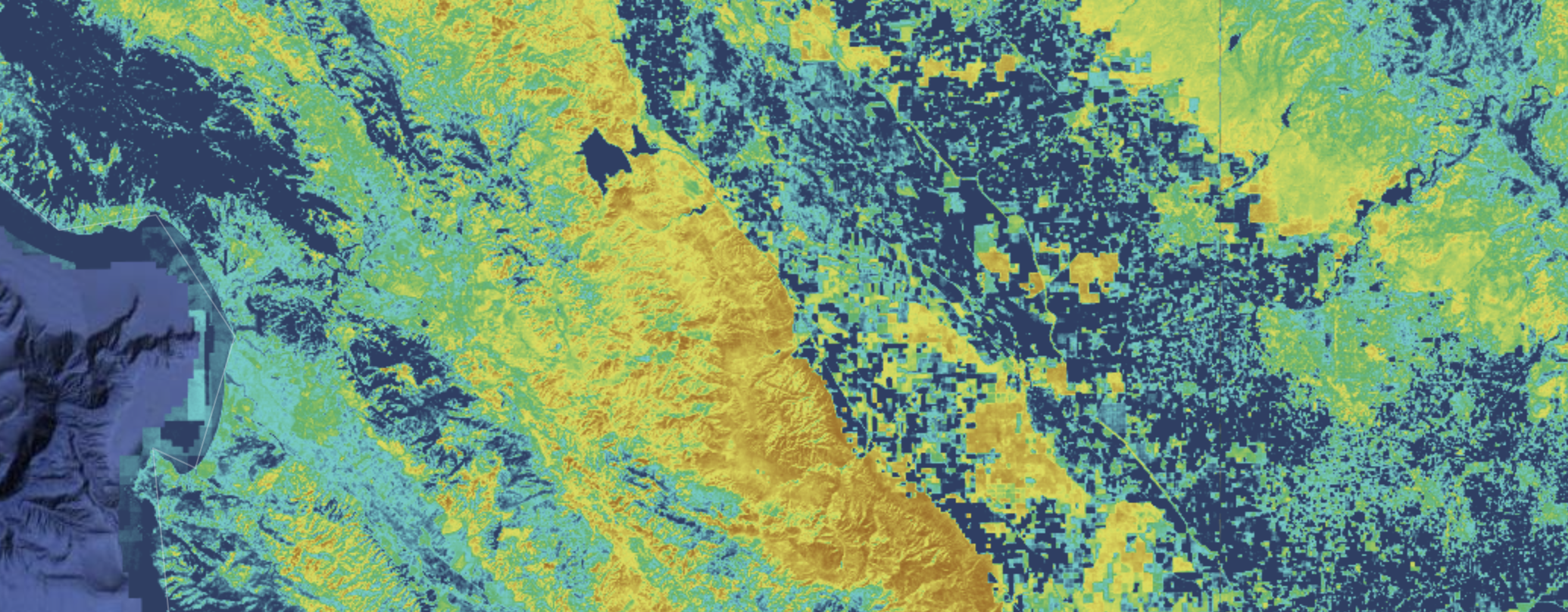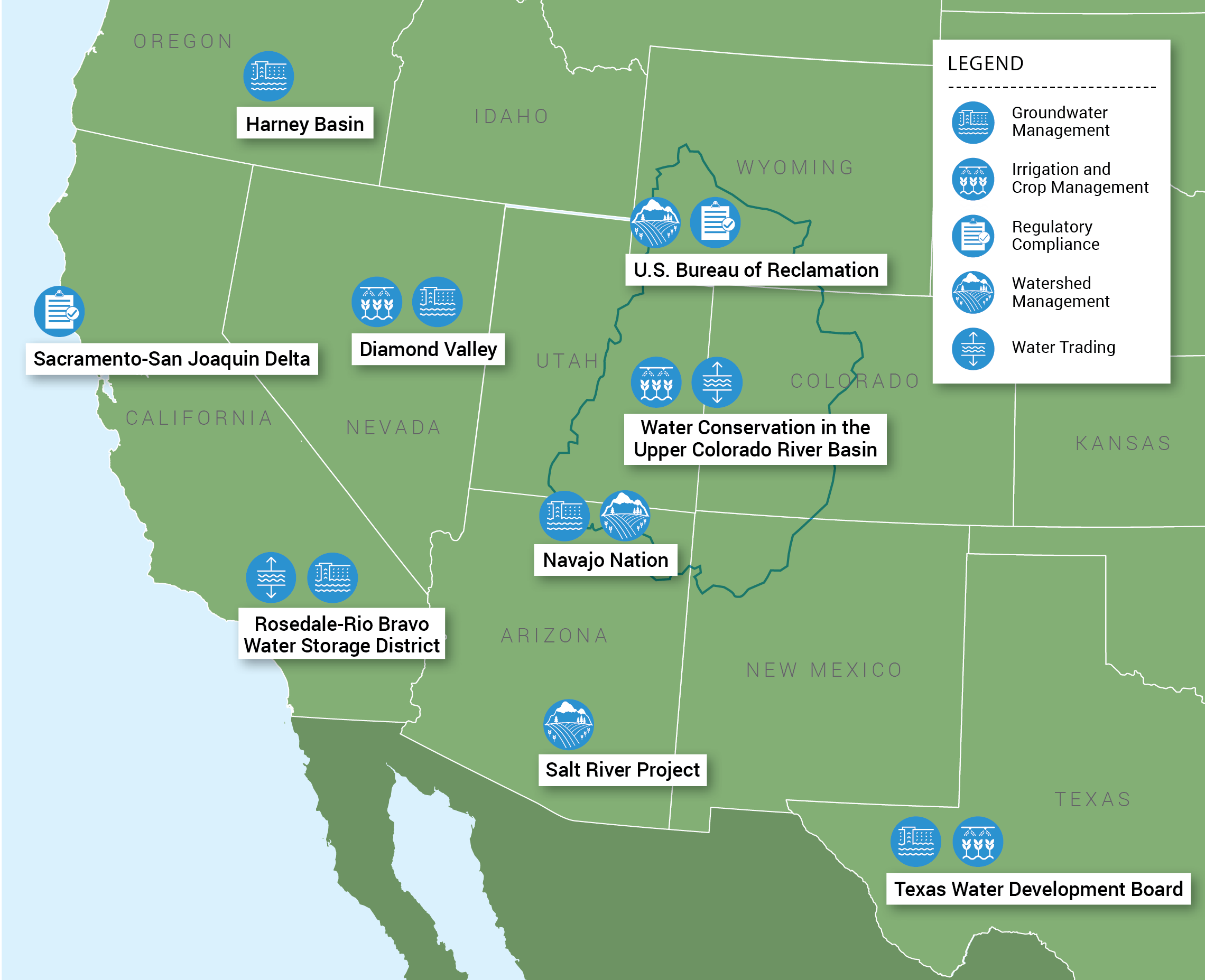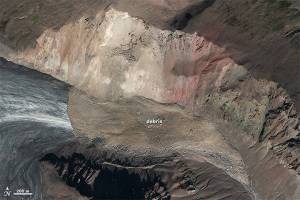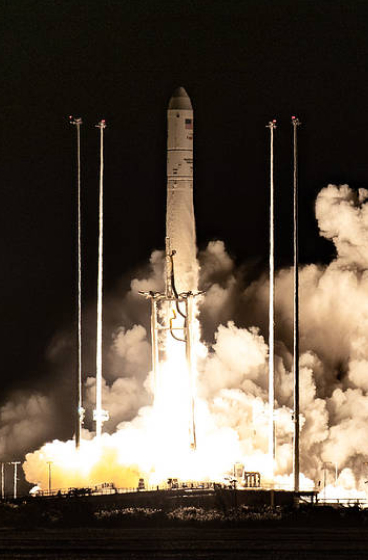5 min read
OpenET Launches a New API

On Tuesday, October 3, NASA Ames’ OpenET program launched an application programming interface (API) for its widely-used Data Explorer tool.
OpenET is a program providing satellite-based information on evapotranspiration (ET) and agricultural water use, currently deployed across the 23 westernmost continental states. Data is provided at a scale of individual fields, or a quarter acre per pixel, and available at daily, monthly, and annual time scales.
The current Data Explorer is freely available online, with the intent that anyone with an internet connection can easily access, download, retrieve and review data on water management. The October 3 launch of the API comes as the second piece of a three-part initiative to achieve this goal: stage one was the creation of the Data Explorer itself. Stage two, the new API, is designed to allow data to be more easily retrieved and integrated with a variety of water management applications on local, state, or federal levels.
The program’s manager, Forrest Melton, saw many applications of the new API, “for on-farm water management, for irrigation scheduling, for use in irrigation design, or for use in development of water balances for an individual irrigation district or watershed. The API is the piece that will allow partners in the water resources management and agricultural sectors to begin to much more easily and automatically integrate data from OpenET into other applications and tools.”
The API is the piece that will allow partners in the water resources management and agricultural sectors to begin to much more easily and automatically integrate data from OpenET into other applications and tools.”

Forrest melton
OpenET Program Manager
There are currently 10 states retrieving and incorporating information from OpenET into various state water data information systems; the API will now make it easier to formalize and automate the data retrievals, and hopefully enable more states to integrate satellite data into their water management platforms in the future.

In an example of the need and efficacy of OpenET’s data systems, the new API is already being used as part of the Delta Alternative Compliance Plan. California passed a law at the end of 2021 requiring the monitoring and reporting of specific elements of water usage, affecting nearly every farm in the Delta: an expensive, complex, and time-consuming ask. Farmers worked with the Delta Water Master to propose the use of OpenET, facilitating the automatic integration of data from the data explorer with California’s State Water Resources Control Board report management system. Melton remarked on the significant impact the integration had on the farmers’ workloads:
“The process for reporting water use in the Delta that used to take farmers half a day to a day, they can now complete in about ten minutes. [It also] saves them thousands of dollars per year in cost for deploying and maintaining flow meters.”
The process for reporting water use in the Delta that used to take farmers half a day to a day, they can now complete in about ten minutes. [It also] saves them thousands of dollars per year in cost for deploying and maintaining flow meters.

Forrest melton
OpenET Program Manager
Water resource management has historically been a controversial subject for California, and Melton said it is gratifying to help create a “win-win” opportunity that is mutually beneficial for both parties;
“They’ve had record levels of reporting this last year. We know it’s saved farmers money [and] time, and given the state more consistent data across the Delta, which is a critical nexus for water management in the state. […] It’s a bit in the weeds, I think, for the general audience. But for folks that work in water and understand how challenging some of these things have been, it’s a huge, huge win.”
The OpenET team is also talking to the Western States Water Council about integrating satellite data into Upper Colorado River Basin demand management programs; an initiative the new API will be a critical piece of. Unlike the Delta, operating within this watershed would focus less on water use reporting and more on supporting the development of incentive-based water conservation. In short, such a program would allow farmers, ranchers, and other agricultural water rights holders to apply for funding to conserve water in the Colorado River Basin.
Developing a water conservation incentive program, however, is just one of the intended outcomes of the new API. Other goals stretch across the nation, and include:
- Implementing the Sustainable Groundwater Management Act in California
- Provisioning engineering firms and consultants to support multiple groundwater sustainability agencies
- Supporting the USGS National Water Census and National Hydrologic Model
- Supporting the Columbia River Basin evapotranspiration mapping tool; a multi-state initiative co- developed by the Oregon Water Resources Department, Idaho Department of Water Resources and Washington Department of Ecology
- Providing low latency data and forecasted information to support irrigation scheduling, thereby aiding individual farmers and ranchers
Creating the API has taken Melton and his teams years of work, partnering closely with end-user agencies and organizations to test and refine the platform before its official release. This initial launch will go out to roughly 10,000 registered users, with the intent for wider promotion once the initial wave of usage is passed and the platform is performing smoothly.
Looking at what is next for OpenET, Melton stated that the third stage of the open data architecture will be geared towards individual farmers and ranchers, creating custom reporting tools for farm and ranch management support. This final iteration will focus on providing a user-friendly interface to engage with those that may be interested in the technology but not have the programming background to synthesize the data sets in a way they can use. The graphical user interface, formally titled the OpenET Farm and Ranch Management Support (FARMS) tool, will sit on top of the API and guide users through the basics of setting up queries and running recurring reports. Melton was optimistic that a prototype of FARMS could be ready in early 2024.
About the Author
Milan Loiacono
Milan Loiacono is a science communication specialist for the Earth Science Division at NASA Ames Research Center.
Share
Details
Related Terms
Click here for original story, OpenET Launches a New API
Source: NASA Breaking News






